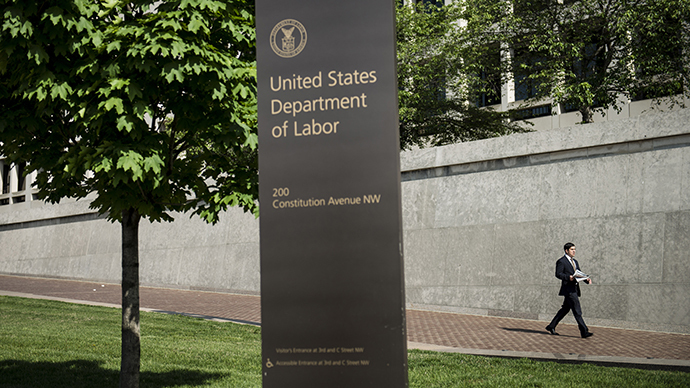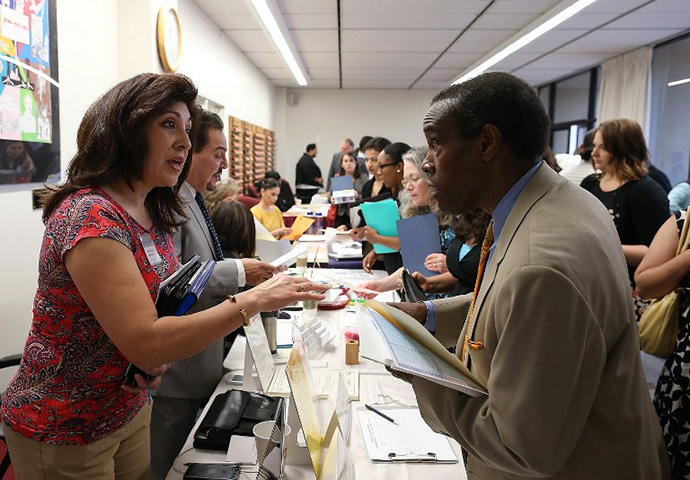Monthly jobs numbers from Census Bureau may have been manipulated since ‘10 - report

An investigation has begun into a report that alleges some numbers of the government’s monthly jobs outlook may have been manipulated since 2010, including the run-up to the 2012 presidential campaign.
According to internal Census Bureau documents given to the New
York Post, one Census Bureau employee in the Philadelphia region
fudged data that went into the monthly unemployment report in
2010, was caught and the allegations were probed to a degree,
though subsequent action is unclear.
The Census Bureau compiles data for the household survey portion that goes into the overall report for the Department of Labor. The other portion of the report is the payroll survey compiled by the Bureau of Labor statistics with assistance from states and input from companies regarding employment each month.
Census Bureau employees like Julius Buckmon - the Philadelphia employee who conducted three times as many household interviews as his colleagues, according to the Post’s anonymous source for the allegations - are required by the Dept. of Labor to achieve a 90 percent success rate on a monthly round of interviews, meaning finding 9 out of 10 households targeted and reporting back their employment status.
Buckmon told the Post in an interview there were never clear rules on how he and his colleagues should treat people they could not reach by phone or who didn’t answer their doors. All the while, the quota demanded they find targets. So he essentially made up survey results, creating people and giving them jobs, which could have lowered the jobless rate.
There are six Census regions from which data is collected for the survey. The Philadelphia and New York regions were falling short, according to the Post. Buckmon says he was instructed to make up data along the way.
“It was a phone conversation - I forget the exact words - but it was, ‘Go ahead and fabricate it’ to make it what it was,” Buckmon said.
The Census Bureau looked into “a handful” of complaints about Buckmon, even though “more than a dozen instances were reported,” according to the internal documents given to the Post.
Census program coordinator Joal Crosby was asked in 2010, “Why was the suspected … possible data falsification on all (underscored) other survey work for which data falsification was suspected not investigated by the region?”
Crosby answered: “Unable to determine why an investigation was not done for CPS,” or the Current Population Survey - the unemployment report’s official name.
The Post report does not reveal what, if any, action came from the review of Buckmon’s falsifications.
The Labor Dept. claims it was never told about the transgressions.
“Yes, absolutely they should have told us,” an agency spokesman said. “It would be normal procedure to notify us if there is a problem with data collection.”
The anonymous source that supplied the internal documents to the Post alleges the practice goes beyond one employee and continues to this day, which includes the 2012 presidential election, when the unemployment rate dropped to a 44-month low just before early November.
But The Atlantic points out if Census was cooking its numbers, the trend during this period would diverge from the accompanying payroll survey, as they usually track together.
“According to both the payroll and household surveys, job growth averaged about 0.1 percent per month from 2010 through the election. The household survey showed slightly faster job growth than the payroll survey in 2012, but slightly slower growth in 2011. Ultimately, if the household survey really was adulterated with fake data, the impact seems to have been too subtle to notice.”
The investigation is in the hands of the Department of Commerce Inspector General, as the agency oversees the Census Bureau.
“The Census Bureau takes allegations of fraud by its employees very seriously,” according to a Commerce statement. “Fabrication of data by an employee is grounds for disciplinary action, including dismissal and possible criminal action.”
Rep. Blake Farenthold (R-TX), who chairs the House panel that oversees Census told Bloomberg, “The allegation that data gathered by the Census Bureau is being manipulated for any reason is extremely serious.”
The Census Bureau for its part has downplayed the allegations. “We have no reason to believe that there was a systematic manipulation of the data described in media reports,” the agency said Tuesday in a statement.















